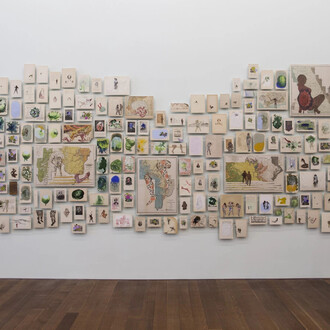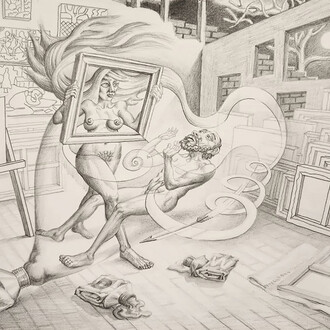This summer, the Museum of Contemporary Art (MCA) Chicago presents Homebodies, curated by Naomi Beckwith, featuring work by contemporary artists who examine the space of the home, both literally and figuratively, as a site for making art. On view from June 29 to October 13, 2013, the exhibition demonstrates a new understanding of how the domestic context has influenced the creation and interpretation of contemporary art. This exhibition is organized by Naomi Beckwith, Marilyn and Larry Fields Curator at the MCA Chicago.
Homebodies incorporates a range of work, some made of materials found in the domestic space and others that represent or re-create a sense of domesticity. The exhibition includes paintings by Guillermo Kuitca and Hurvin Anderson; sculpture by Robert Gober and Rachel Whiteread; installations by Alexandre da Cunha and Do Ho Suh; photography by Marina Abramović, Barbara Kruger, and Doug Aitken; video by Martha Rosler, Rivane Neuenschwander, and Guy Ben-Ner; and a living-room environment by Dzine that doubles as a nail salon. It is likewise international in its reach, drawing from six continents to include more than 30 artists at various stages in their careers.
The exhibition is organized in three sections. The first, Architectonics, features works that represent the interiors of the home or use tangible materials taken from the domestic space. In the second section, Divisions of Labor, artists refigure activities such as care and cleaning, or replicate home-based business. Psycho-geographies, the third section, considers how private interiors can become a metaphor for mental spaces, often fraught with anxiety and upheaval, challenging traditional ideas of domesticity.
The domestic setting has long existed as an alternative to the traditional studio space for art making. Homebodies is partly inspired by this history but focuses on artworks from the late 1960s to the present in which the home becomes a focal point. Among these are select works from the 1970s by groundbreaking feminist artists. These artists challenged the cliché of the heroic male artist creating alone in his studio while exposing the family home as a place of both identity formation and daily labor. Tension arises, at the same time, between life inside the home and the forces outside the walls of the home.
In the Homebodies exhibition, Chicago-based artist Dzine presents Imperial Nail Salon (my parents’ living room) (2011-13), in which he re-creates his childhood living room where his mother ran a private nail salon business. Visitors are invited to participate in this interactive performance on two Saturdays each month during the run of the exhibition. During those times Dzine’s installation becomes a working nail salon with nail artists creating customized nail designs. The living room nail salon illustrates one of the ways in which the home can become a place of work, where social and professional activities fluidly come together with daily life. Dzine explains, “As a child of first-generation Puerto Rican immigrants in the United States, well-paying jobs were scarce. So, in order to supplement extra income, my mother created a salon in our home…” In part an homage to his mother, Imperial Nail Salon is also a celebration of nail art culture. Dzine elaborates, ”The development of nail art culture is about the community that has been built within the confines of a salon, the friendships that develop, and the stories that are shared.”
Artist Alberto Aguilar's Home Field Play is an installation of repurposed furniture, in which familiar household objects provide visitors with opportunities for play, interaction, and repose. A dining table is transformed into a mirrored ping-pong table, a carpeted area houses a musical game involving bells and balloons, televisions turned on their side invite visitors to play familiar movies in a new light, and a bed offers moments of rest, reading and contemplation. Presented with the Homebodies exhibition, Aguilar invites three Chicago-based artists to activate the installation with a series of performances.



















